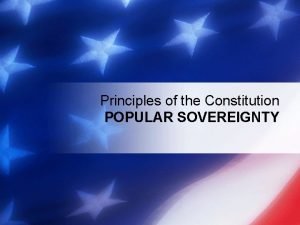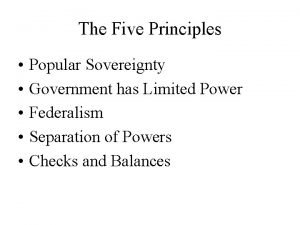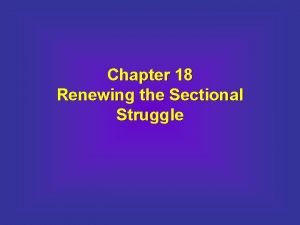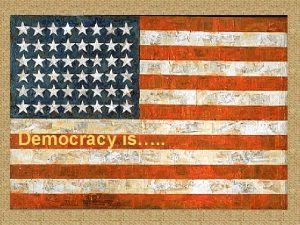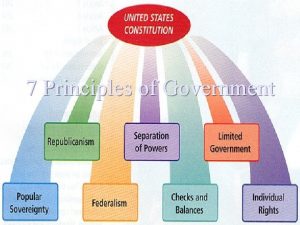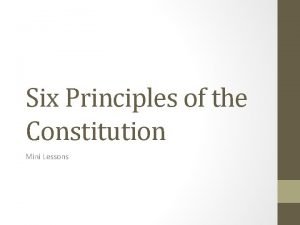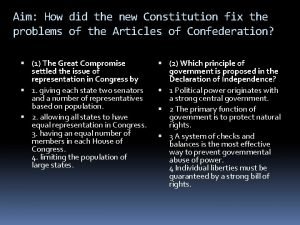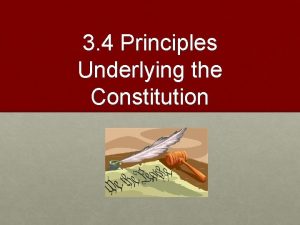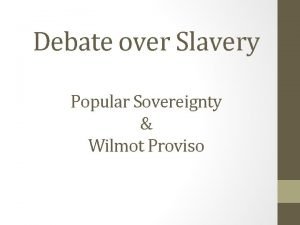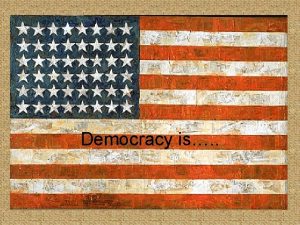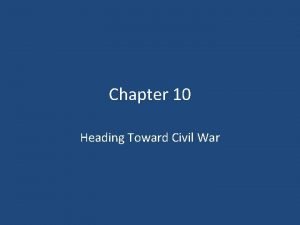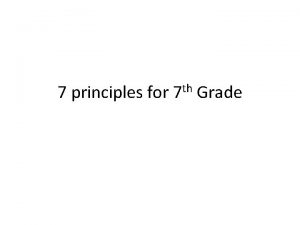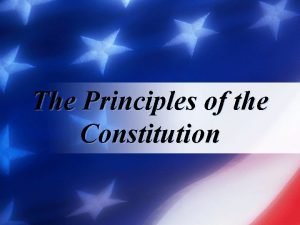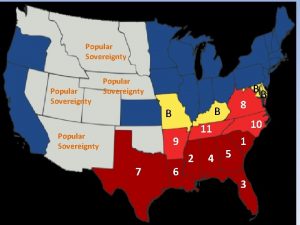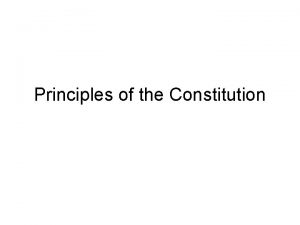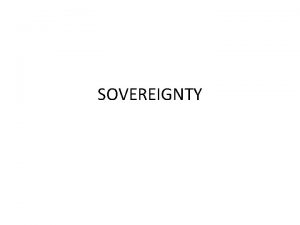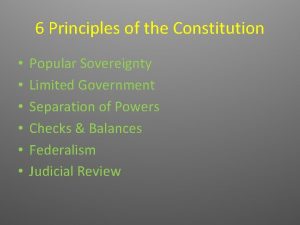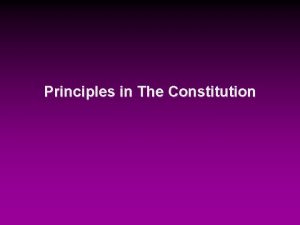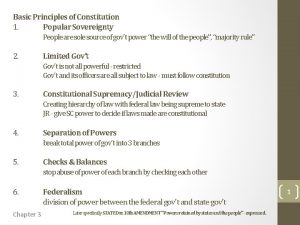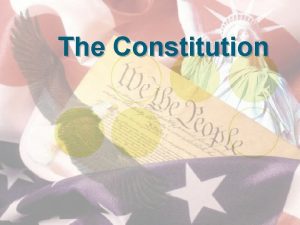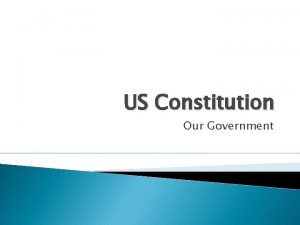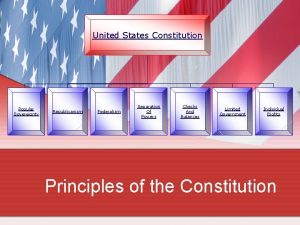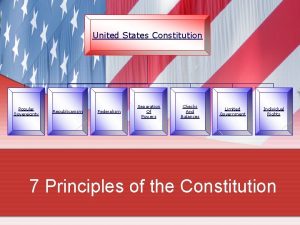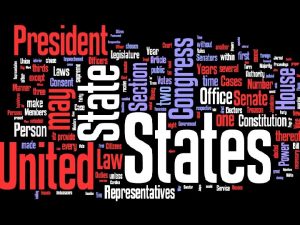THE PRINCIPLES OF THE CONSTITUTION Popular Sovereignty A















- Slides: 15

THE PRINCIPLES OF THE CONSTITUTION

Popular Sovereignty A government in which the people rule The government’s right to rule comes from the people

Republicanism Citizens elect representatives from themselves and give them the responsibility to make laws and run the government for a specific period of time.

Limited Government No one is above the law; everyone must follow it, even government officials. The government only has the power that the Constitution gives it.

Federalism Dividing the power between the Federal (National) Government and the State Governments. Enumerated Powers. National Powers Reserved Powers- State Powers Concurrent Powers shared between the national government and the states

Federalism

Supreme Law of the Land The Constitution is the supreme law of the land Conflict between state law and federal law is decided in federal court, using the Constitution as a guide.

Separation of Power Division of power into three branches so that no branch has all the power. Legislative Branch makes the laws Executive Branch enforces the laws Judicial Branch interprets the laws and makes sure they are Constitutional

The Legislative Branch Also known as Congress, the Legislative Branch writes all the national laws Congress is made up of the House of Representatives and the Senate

The Judicial Branch The Supreme Court and all lower federal courts make sure the rights of the people are protected The Supreme Court makes sure all laws follow the Constitution

The Executive Branch The Executive Branch, led by the President, enforces, or carries out, the laws.

Checks and Balances Each branch of government has the power to check, or limit, the actions of the other two branches. For example, the Judicial Branch reviews all laws written by Congress (the Legislative Branch) and signed by the President (the Executive Branch) to make sure they are Constitutional.

Checks and Balances

Individual Rights The Constitution protects the individual rights and personal liberties (freedoms) of the people Some of these rights include freedom of speech, religious freedom, trial by jury, and many other

Any questions?
 Principle of popular sovereignty
Principle of popular sovereignty Principle of popular sovereignty
Principle of popular sovereignty The constitution lesson 1 principles of the constitution
The constitution lesson 1 principles of the constitution The constitution spells out the powers denied to
The constitution spells out the powers denied to Popular sovereignty
Popular sovereignty Cartoon elite theory
Cartoon elite theory Limited government
Limited government Six basic principles of the constitution worksheet
Six basic principles of the constitution worksheet Popular sovereignty
Popular sovereignty Popular sovereignty
Popular sovereignty Popular sovereignty
Popular sovereignty Direct democracy political cartoon
Direct democracy political cartoon Popular sovereignty
Popular sovereignty Popular sovereignty definition
Popular sovereignty definition Popular sovereignty
Popular sovereignty Popular sovereignty
Popular sovereignty
